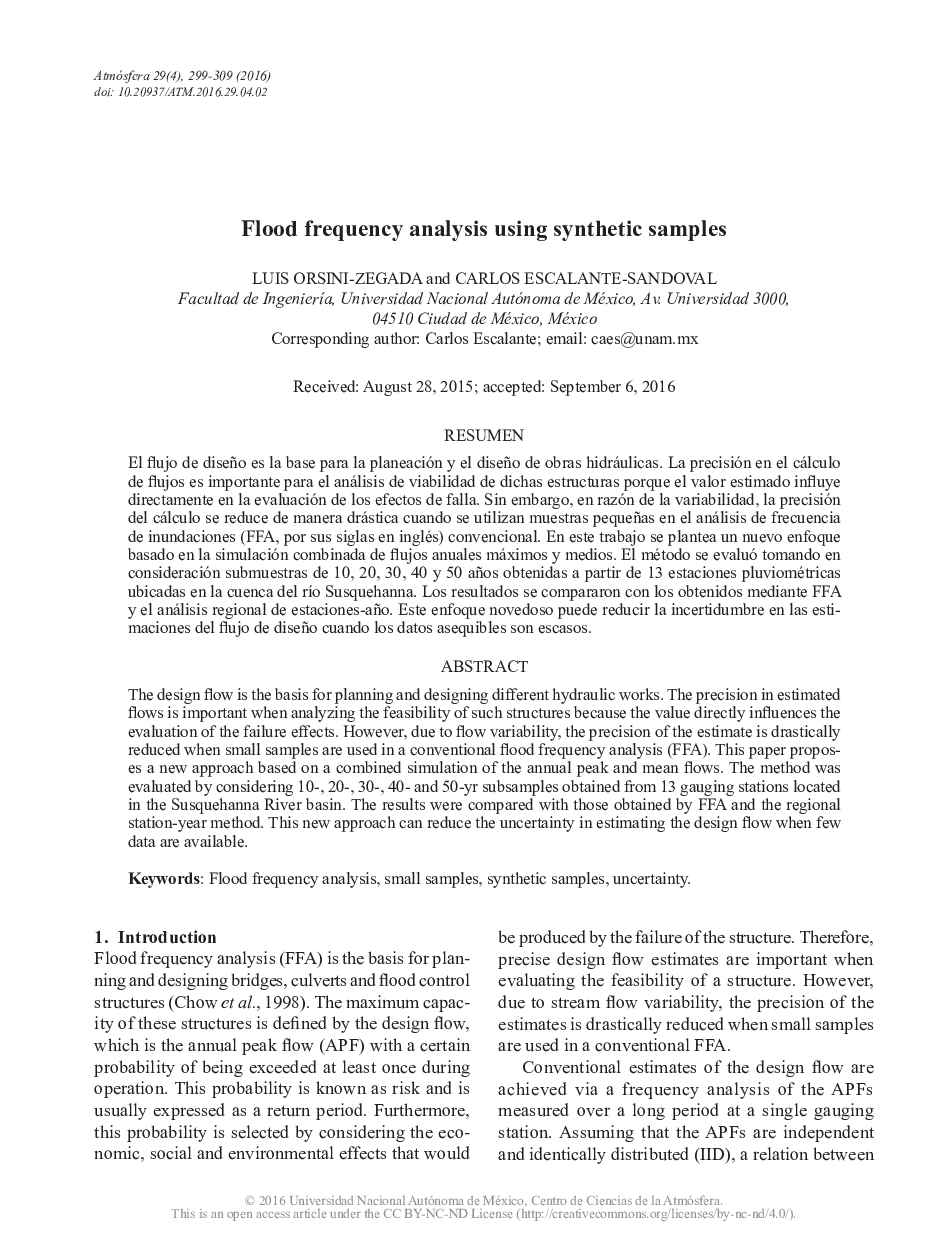| Article ID | Journal | Published Year | Pages | File Type |
|---|---|---|---|---|
| 8867226 | Atmósfera | 2016 | 11 Pages |
Abstract
The design flow is the basis for planning and designing different hydraulic works. The precision in estimated flows is important when analyzing the feasibility of such structures because the value directly influences the evaluation of the failure effects. However, due to flow variability, the precision of the estimate is drastically reduced when small samples are used in a conventional flood frequency analysis (FFA). This paper proposes a new approach based on a combined simulation of the annual peak and mean flows. The method was evaluated by considering 10-, 20-, 30-, 40- and 50-yr subsamples obtained from 13 gauging stations located in the Susquehanna River basin. The results were compared with those obtained by FFA and the regional station-year method. This new approach can reduce the uncertainty in estimating the design flow when few data are available.
Related Topics
Physical Sciences and Engineering
Earth and Planetary Sciences
Atmospheric Science
Authors
Luis Orsini-Zegada, Carlos Escalante-Sandoval,
